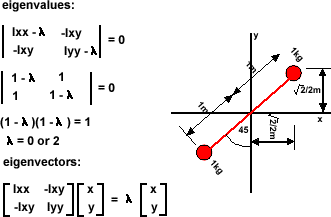


Therefore, the angle of reflection (the angle of departure by the object after the collision) equals the angle of incidence (the incoming angle before the collision) relative to the normal, or perpendicular to the wall. I think we can already come to the conclusion that it will bounce off the wall at the same angle it arrived at. To solve the problem, first we have to make an assumption about what will happen when an object that's very small and perfectly elastic hits a wall.

This is shown in part A of Figure 13.24 in 2D (the 3D case is the same). Using rectangles as bounding collision volumes works okay if you write pong games, but this is the 21st century, baby, and we need just a little bit more! What we need to do is derive the reflection equations for a vector reflecting off a flat plane. Simple collision pool table model.Ĭomputing the Collision Response with Planes of Any Orientation Note that when running the simulation the balls don't hit each other, just the edges of the pool table. Figure 13.23 shows a screen shot of the game in action. A simple cheat for object-to-object collisions.Īs an example of using these techniques, I have created a demo named DEMO13_6.CPP|EXE (16-bit version, DEMO13_6_16B.CPP|EXE) that models a pool table with balls that never stop bouncing. Enact the collision and then re-compute the velocities. If you want to use the preceding technique as a quick cheat to make objects bounce off of each other, simply assume that each object is a bounding rectangle from the other object's point of view. You'll have to use the more general angle calculation for walls or barriers that aren't co-linear with the x and y axes. Of course, this simplification only works well for horizontal and vertical barriers. If (x >= EAST_EDGE || x = SOUTH_EDGE || y <= NORTH_EDGE)Īnd amazingly the object will bounce off the walls. test for east and west wall collisions given the object is at x,y with a velocity if xv,yv And similarly on the north and south walls, you want to reverse the Y velocity and leave the X velocity alone. The bottom line is if the object hits a wall to the east or west then you want to reverse its X velocity while leaving its Y velocity alone. Here's the trick: Instead of thinking in terms of angles and all that, think in terms of results. Then the idea is to see if you can solve the problem in some other way since you have exact knowledge of all the conditions. The trick is to understand the physics model that you're trying to model. Bouncing a ball off an irregular object with flat facets.Īlthough this isn't as complex as the general elastic collision, it still takes a bit of trigonometry, so there's got to be a simpler way! And of course there is. Thus all we need to do to bounce an object off a pool table-like environment that consists of hard edges that have large mass is to compute the normal vector direction, the direction that the object struck at, and then reflect the object at the same angle as shown in Figure 13.21. When a ball hits one of the sides then it always reflects off the side at an angle equal and opposite to its initial trajectory, as shown in Figure 13.20. The balls have very small mass in comparison to the pool table. If one object collides with another object that has mass much greater than the colliding object, then the collision is much simplified since we only need to figure out what happened to the single object that's doing the colliding rather than two objects. Given the object has initial velocity (xv,yv), the object can hit any of the four sides of the screen. It depicts a fairly common collision problem in games, that is, bouncing an object off the boundaries of the screen. Game programmers that don't know anything about elastic or inelastic collisions have been faking collisions for years and we can do the same. Before I show you the real way to do it let's use the other side of our brains. Most video games don't even try to mess with non-elastic collisions and stick to simplified elastic collisions since they themselves are hard enough to compute. Elastic collisions are collisions where both kinetic energy and momentum are conserved in the colliding objects while non-elastic collisions don't conserve these values and energy is converted to heat and/or used for mechanical deformations. As I explained earlier in the chapter, two kinds of collisions exist: elastic and non-elastic.


 0 kommentar(er)
0 kommentar(er)
